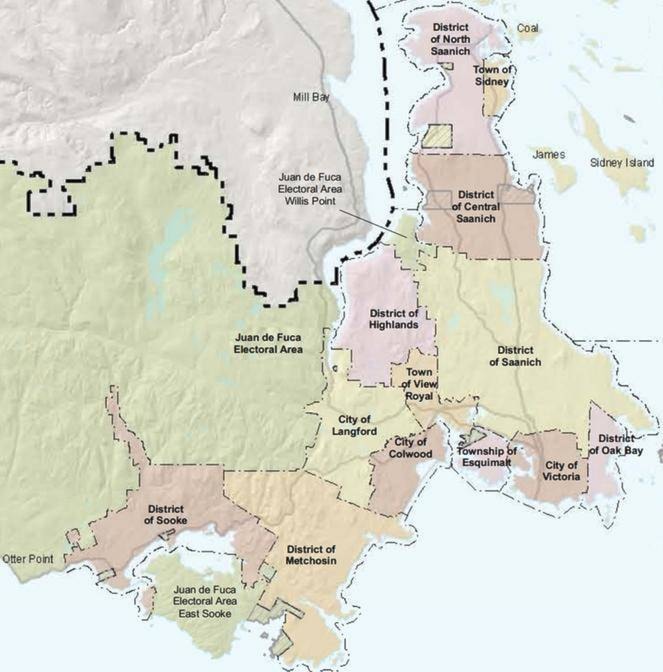A regional development plan that Saanich opposes is likely heading towards non-binding mediation.
The board of Capital Regional District will consider sending the Regional Growth Strategy (RGS) to non-binding mediation when it meets Wednesday. Saanich — along with six other CRD member municipalities — opposed the RGS, citing concerns about future urban sprawl.
Observers have noted that this level of opposition signals the existence of multiple competing visions for the region, visions that non-binding mediation will now attempt to reconcile, pending final approval.
If approved, mediator Morley McKeachie will lead the mediation process, with support from Raymond Young, a retired lawyer and registered professional planner. “The team will work collaboratively to evaluate positions and issues,” read a CRD staff report outlining the process. “Mr. McKeachie will author the final report, with contributions from Mr. Young.” Plans call for the mediation process to take place between June 15 and October 20. According to the report, the hourly fee rate for both McKeachie and Young is $350 per hour.
Once municipalities have received McKeachie’s final report, they will have to re-consider the revised sections for approval. “Any remaining disputed issues would be subject to a binding arbitration process,” the report read.
Saanich council signalled its opposition earlier this year after it had received a staff report that reviewed the proposed RGS against the current version. “In comparison to the existing 2003 Regional Growth Strategy, it would appear that the proposed 2016 Regional Growth Strategy reduces the emphasis on a regional and focused approach to sustainable growth management,” it read. Specifically, the report singles out both proposed changes to land use designations and water servicing rules.
Concerning the former, the report notes that the proposed RGS drops language designed to funnel growth into eight “major centres,” five of which were either completely or partially in Saanich.
Launched under legislative power the province had granted the Capital Regional District in the mid-1990s, the RGS process commits CRD members to what a Saanich staff report calls “common social, economic and environmental objectives” set to shape the future of the region.
Six municipalities (Langford, Metchosin, Oak Bay Sidney, Sooke and Victoria) accepted the 2016 RGS. Seven municipalities (Central Saanich, Colwood, Esquimalt, Highlands, North Saanich, Saanich and View Royal) rejected the 2016 RGS.
